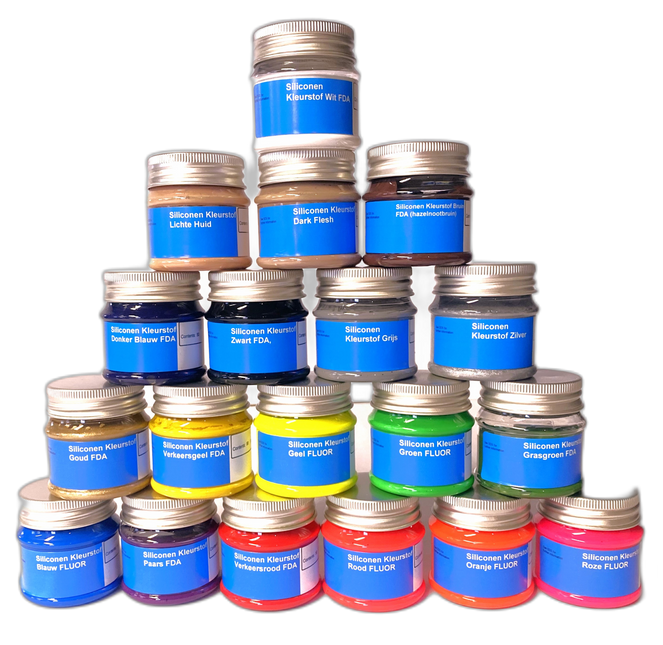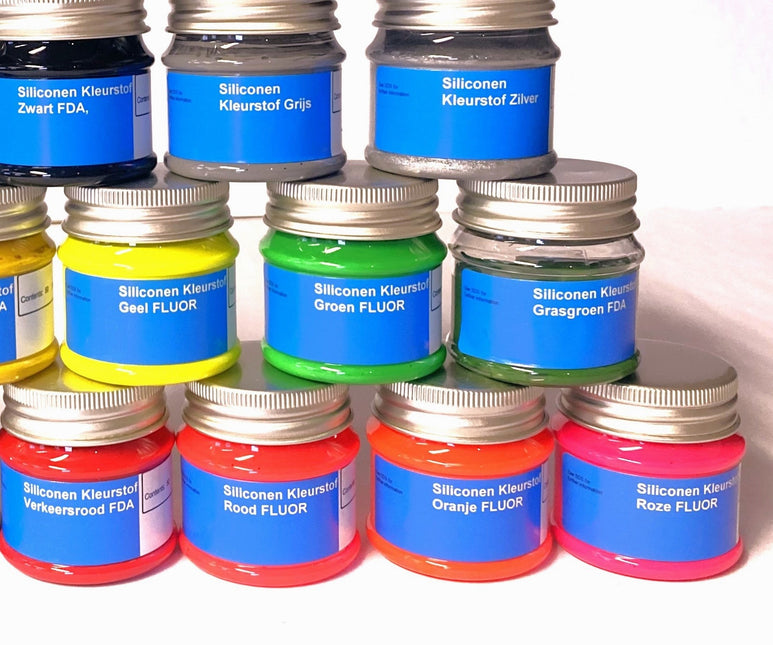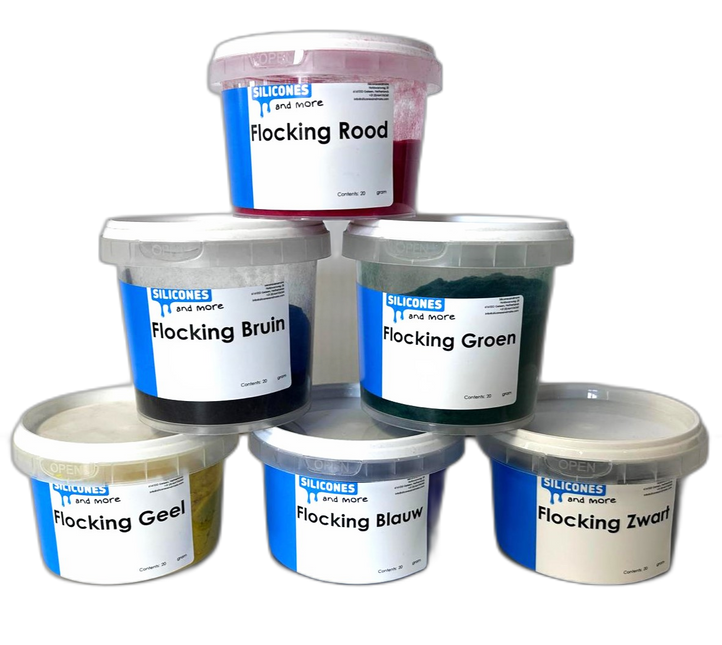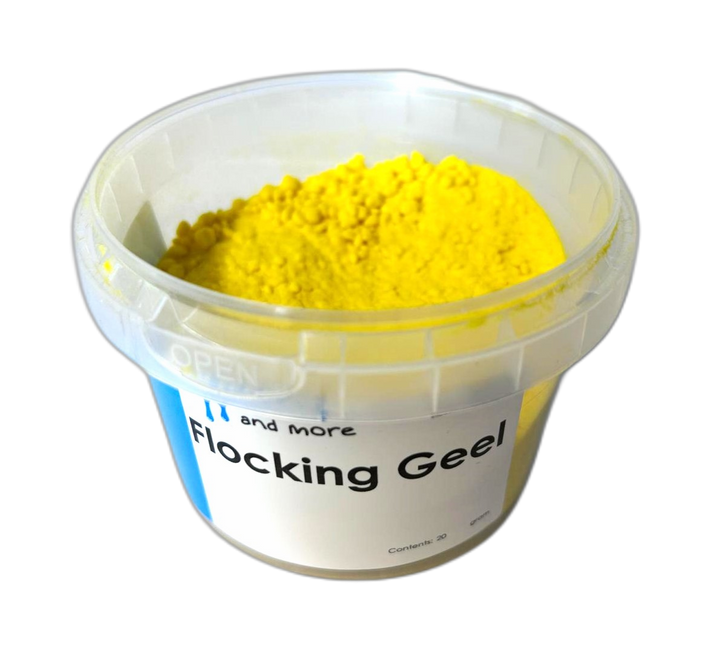Silicone Dyes
-


Huismerk - SAMSilicone Dye
€11,95€9,88
Depending on the desired color intensity of the final product, 50 grams of dye normally suffices for up to 5 kg of silicone. (1%) Shake or stir the silicone thoroughly before use. The silicone dyes can be used in combination...
-


Huismerk - SAMFlocking
€10,89€9,00
Easy to process Suitable for landscaping Suitable for SFX scene Safe to use Can be used without heating Description Flocking consists of colored flakes that were originally intended for making a tactile surface. It is an easy easy way to...
What are silicone dyes?
Our silicone colorants – also known as silicone pigment or silicone dye – have been developed for the even coloring of silicone rubber , both by addition (platinum cure) and condensation (tin cure).
The color pastes mix quickly in A/B systems and deliver consistent, vibrant color with minimal dosing. Perfect for professional applications where color consistency is crucial.
Dosage & Yield: Most applications require only 0.2–1% dye; for extreme saturation, up to approximately 3% may be needed.
Guideline value: 50 g of dye is sufficient for approx. 5 kg of silicone (≈ 1%).
Key Features
- ✓ Food safe where FDA explicitly states otherwise
- ✓ Colours strongly, little needed for an intense result
- ✓ Even color, streak-free when mixed correctly
- ✓ Easy mixing directly with A or B component
- ✓ Many colours can be mixed with each other for your own shades
Compatibility
- → Addition (platinum) and condensation (tin) curing silicones
- → Pourable, brushable and kneadable systems
- → Specifically developed for silicone rubber
Results on Different Bases
Transparent/Translucent
On transparent or translucent silicone the colour remains vibrant and intense.
- Maximum color intensity
- Bright, vibrant hues
- Ideal for decorative applications
White sasis
With white silicone, the color becomes more pastel (slightly paler) due to the white base.
- Softer, pastel shades
- Adjust dosage for desired intensity
- Suitable for subtle colour accents
Processing (step-by-step)
- Shake or stir the dye well before use.
- Pre-dosing: Add in small portions (e.g. 0.2–0.5%) and increase if necessary.
- Mixing method: Mix into the total silicone mixture or pre-dose into the A or B component for visual mixing control.
- Mix evenly until a smooth, streak-free color is achieved. Observe the pot life and curing time.
- Mixing colours is possible – make a small test first to assess the end result.
Special instructions
- FDA compliance doesn't apply to all colors. For culinary projects, only use products that clearly state this.
- Avoid overdosing; too much pigment can affect properties (viscosity, curing).
- For food contact applications, follow any post-cure instructions.
Shelf life & safety
Shelf life
At least 3 years when stored closed in a cool, dry place.
Safety
Harmless when used normally. If swallowed, seek medical advice immediately. Always consult the safety data sheet.
Frequently Asked Questions (FAQ)
Can I use this silicone dye for addition and condensation silicones?
Yes. Our dyes are designed for both systems. Follow the recommended dosage and mix thoroughly for an even result.
What dosage produces a deep color without affecting the curing time?
Start with 0.2–0.5% and build up to 1%. Only go higher (up to about 3%) if the datasheet allows it and you need more saturation.
Why does my color turn pastel on white silicone?
The white fillers in the base material mute the color. Use a transparent/translucent base or increase the dosage within the recommended range.
Can I mix colours together?
Yes. Mix colors to create new shades. Always test on a small batch before pouring a full batch.
Product information
Documentation: Product information sheet for Silicone Colorant (dosage, compatibility, and application). Downloadable from the product page.
Getting Started
Discover our range of silicone colorants for addition and condensation systems. Start with a low dosage and build up to the desired color intensity. Perfect for professional and creative applications.





